Discover top guides, trends, tips and expertise from AIO Writers

Ever felt like you’re sifting through a crowded market, searching for that gold nugget everyone else has missed? Imagine stumbling upon an uncharted island of opportunity – that’s what finding a hidden niche is like.
Why settle for an oversaturated market when there are riches in the niches?
In this blog post, I will show you exactly how to find hidden niches and dominate them.
But first, what is a hidden niche?
In business, a hidden niche is a specialized, underserved, growing market segment that will last.
Already, we have four qualifiers:
- Specialized
- Underserved
- Growing
- Lasting
To help you find gems in these hidden niches, I will share you with two simple, big steps:
- Discover Hidden Niches
- Dominate Hidden Niches
For niche discovery, I will use tools like Google Trends and BrandWell.
And for niche domination, I will teach you how to create (lots of) helpful, competitive content that’s tailored to your target audience. For this step, you can hire a human writer or use BrandWell to get the same thing done faster.
Ready to unearth gems from a niche market? Let’s start!
Table Of Contents:
- The Key to Finding a Great Niche
- Turning Pain Points into Profit
- Tools and Resources for Finding Profitable Niches with Low Competition
- Conclusion
The Value of a Hidden Niche
A hidden niche is like finding a secret surf spot that’s got perfect waves and no crowds.
It’s specialized, which means it caters to very specific interests or needs.
This space hasn’t hit the mainstream radar yet, so competition isn’t fierce.
Now you might wonder, why bother with something small when you can go big?
Think about those mom-and-pop shops that suddenly become everyone’s favorite overnight — they were hidden gems all along.
A hidden niche can grow without bumping into too many rivals, just like those little shops did.
In business, lasting appeal matters because fads come and go faster than weekend traffic on a holiday getaway.
Niche markets with staying power have deep roots — like traditions passed down through generations.
They stick around because they’re not just trends; they fulfill ongoing needs or desires.
The Key to Finding a Great Niche
When it comes to establishing a successful niche site, many beginners make the mistake of focusing solely on high-cost-per-click (CPC) keywords. However, this strategy often leads them into highly competitive niches dominated by blackhat SEO tactics.
In reality, finding an effective niche involves two key factors: identifying evergreen and emerging niches. These can provide sustainable traffic and potential growth respectively.
Finding Evergreen Niches
An evergreen niche is one that consistently generates interest over time.
Examples include health and fitness, finance, beauty, and real estate — areas that never go out of style or demand.
Rather than chasing trends or short-term fads, focus on topics that have long-lasting appeal to users.
Finding Emerging Niches
Emerging niches, on the other hand, are those that are just starting to gain popularity.
To identify these golden opportunities:
- Keep an eye on news outlets for trending topics
- Follow relevant social media groups where people discuss their hobbies passionately
- Join forums related specifically to your interests
This proactive approach will help you stay ahead of the curve when it comes to discovering new markets before they become saturated.
Turning Pain Points into Profit
Sometimes businesses overlook what really bugs people — their pain points.
Lucky for us, these are gold mines for uncovering niches. It’s like solving puzzles nobody else has cracked yet.
How do you find these niche ideas?
Find Gold in Gripes: Listen to Your Audience
Your first clue is right under your nose: customer feedback.
People aren’t shy about sharing their frustrations online, from social media rants to forum discussions.
Harness this chatter as intel on where needs aren’t being met.
Knowing your customer’s challenges helps tailor solutions directly to them — and there lies your golden opportunity.
Tune In to Social Signals for Unmet Needs
Social listening tools can turn noise into actionable insights.
They help pinpoint recurring themes across social media networks that signal common problems that don’t have clear solutions yet.
Dig Deeper with Surveys and Interviews
Another way to find niche ideas is to get them straight from the horse’s mouth: surveys and interviews.
A well-crafted survey can uncover nuances in pain points that public posts might miss out on.
In-depth interviews take things further by fleshing out these issues directly with consumers who experience them every day.
Tools and Resources for Finding Profitable Niches with Low Competition
Finding a hidden niche idea is like uncovering buried treasure.
You need the right map, tools, and a keen eye for clues that others might miss.
Keyword Research Tools
Keyword research tools are your compass in this treasure hunt.
They guide you to phrases people search for but aren’t swamped by competition yet.
BrandWell can show you the popularity of specific keywords along with how tough it would be to rank for them.

Social Media and Forums
Social media platforms and discussion forums are your lookouts on this voyage.
Places like Facebook groups, where real conversations happen, offer insights into what folks care about or struggle with.
To find profitable niche ideas, head over to forums and online communities such as Reddit and Quora.
These places teem with unfiltered opinions and needs just waiting to be addressed.
Analytics Tools
Google Trends reveals what’s gaining heat worldwide.
It shows you niche sites with growing interest before they become too crowded.
With these tools on hand, you are now ready to unearth those hidden niche keywords with high demand and low competition — key characteristics of a profitable niche
Step-by-Step Guide to Discovering Hidden Niches
Finding a hidden niche is like unearthing a treasure chest in your backyard — it’s there, but you’ve got to dig.
I’ll walk you through each step using an AI tool like BrandWell because smart tools can make the digging way easier.
Step 1: Discover Hidden Niches
For this purpose, I’m going to focus on keto diets as a starting point. Diets are always trending — some are fleeting, some last for a while, and some turn into movements.
Google Trends analyzes real-time search interest and data, and here’s what it revealed when I searched for the keto diet:
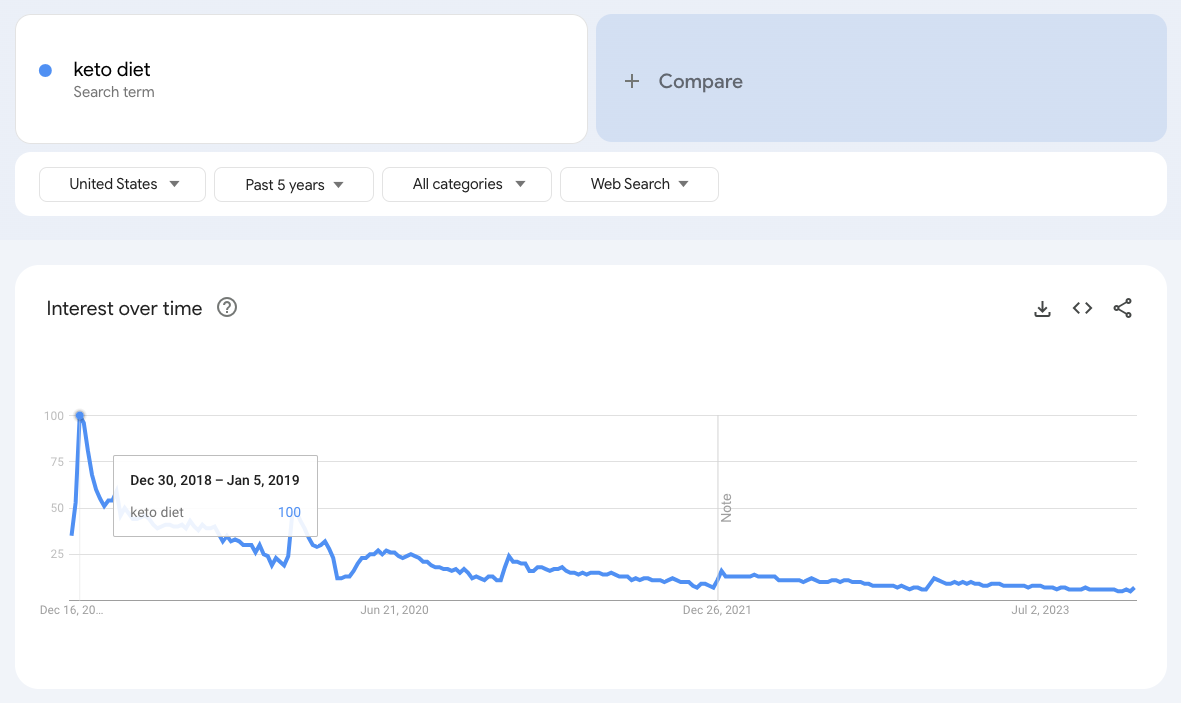
We can see keto diet is (or has been) very popular but is now trending down.
According to Google’s data, the niche keyword peaked at the beginning of 2019 (probably because of New Year’s resolutions) and continues to spike each new year. But downward trends are the opposite of what we want.
So what do we do?
Scroll down to *related queries* and sort for *Rising*.

Now we see some interesting things.
Over the same 5-year span, sirtfood diet has increased 3,000%. That’s great but the trend is a little bit shaky for two reasons:
- The insane spike is likely to go away just as fast as it came.
- I googled it, and it’s a book, so, as a creator, I’m not sure how much of that traffic is intended for the book.
Second on the list is carnivore diet which has exhibited healthy growth over 5 years and doesn’t seem to be going away soon. It’s also part of a larger movement.
Let’s take that term into the BrandWell keyword research tool.
Start Creating Your Brand
To do keyword research in BrandWell, you need to create a project first.
Get a domain name, build your website, and input the details of your project in BrandWell.
For this example, I chose the name Carnivore Kitchen:
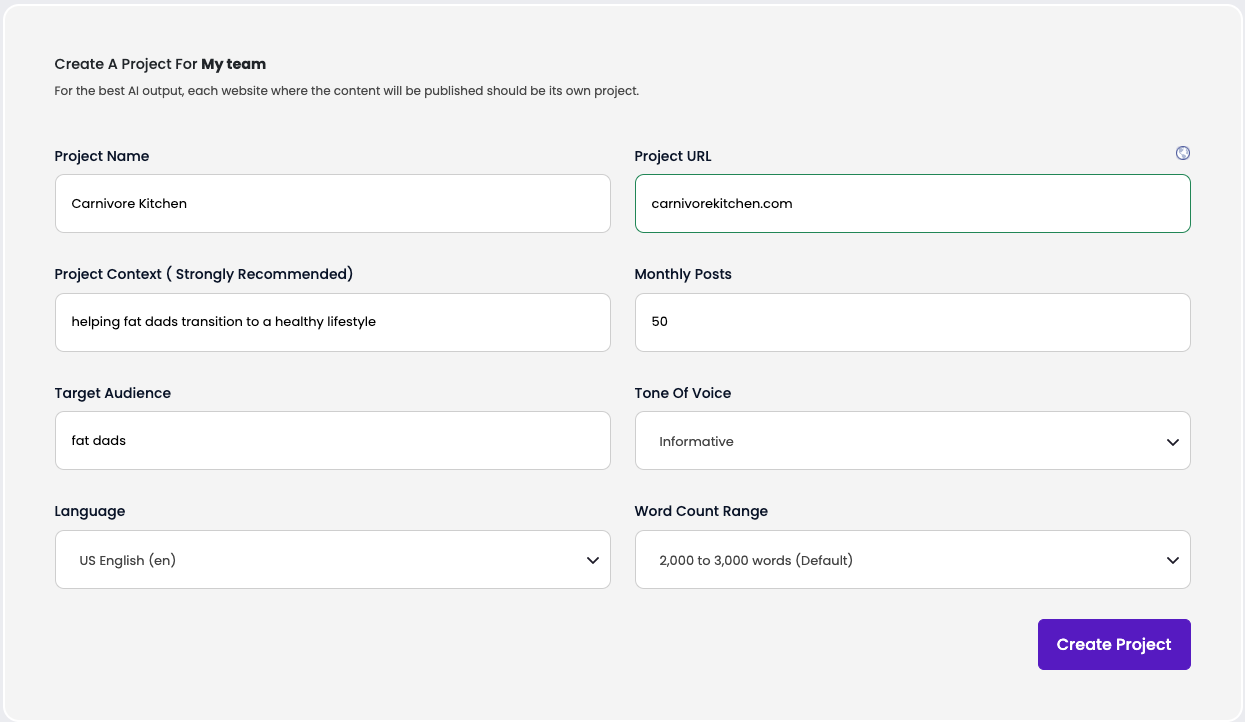
Keyword Research
You can do keyword research directly in BrandWell.
Once in the project, click Keyword Research.
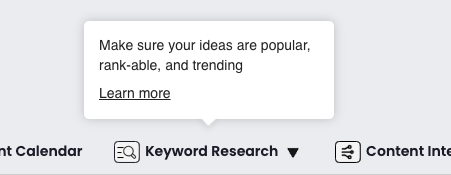
Let’s click Topics and Keywords and type in our seed keyword carnivore diet.

BrandWell gives you hundreds of keywords from this one seed keyword.
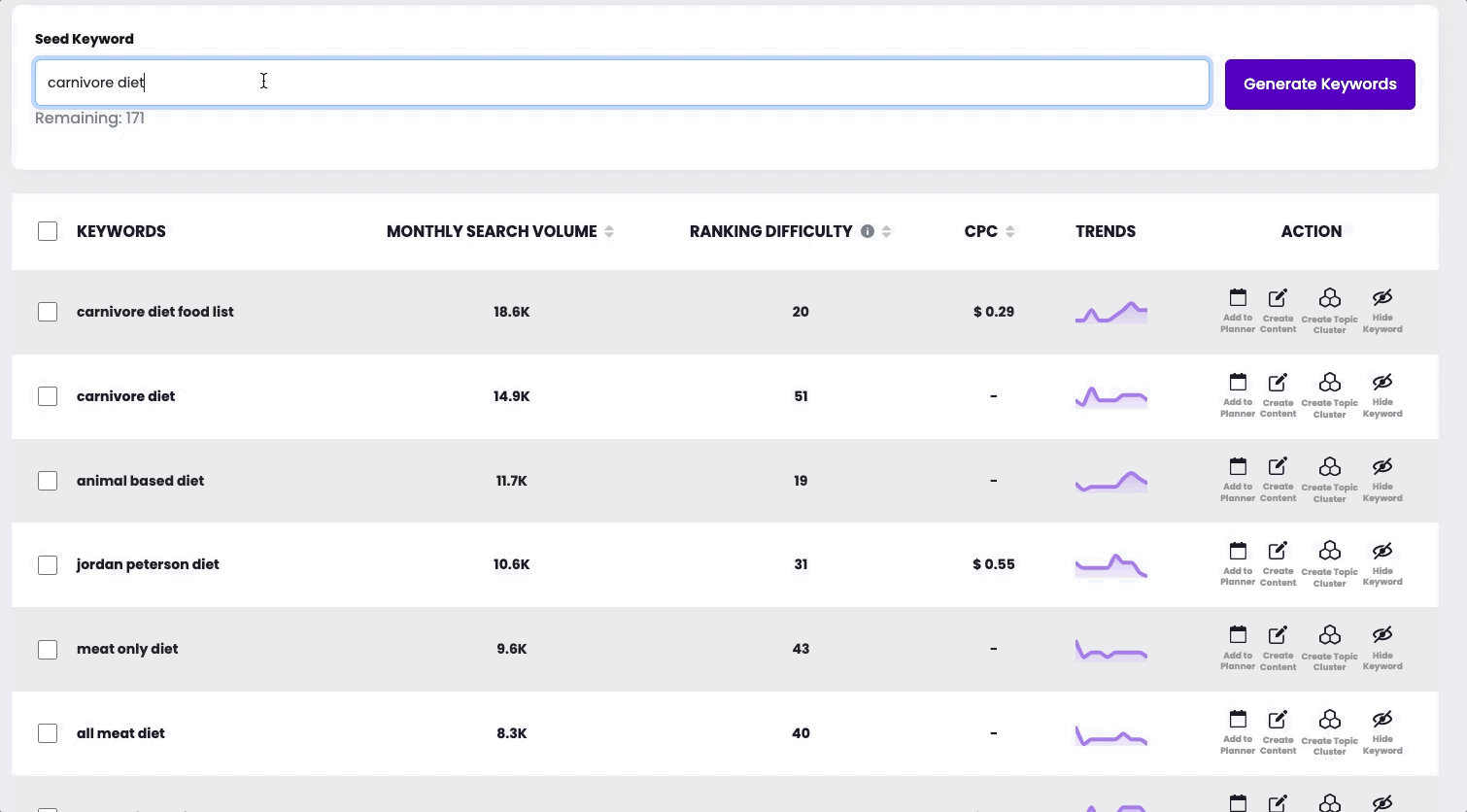
From the generated list of niche keywords, you will find real-time data for two of the most important keyword research metrics: search volume and keyword difficulty.
Let’s choose some to make into content!
For more ideas, let’s go back to Google Search and steal some niche keywords from the People Also Ask carousel.
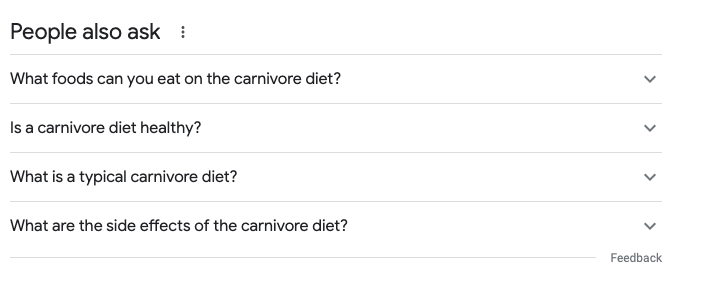
Let’s add these niche ideas to our list of niche keywords in BrandWell:
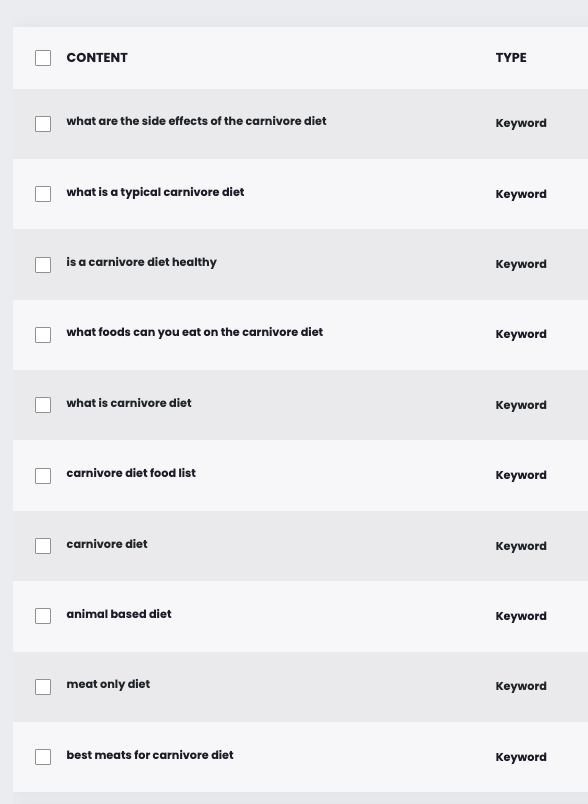
Step 2: Dominate Hidden Niches
In a previous article, we have explained how many articles you should publish on your blog each month, and why.
Search engine algorithms often prioritize newer, fresher content. I see some BrandWell users publishing four blog posts per month. That’s completely fine when you’re just starting out and exercising your content marketing muscles.
But consider what your competition is doing. If they’re already scaling their content, make sure your publishing schedule is commensurate with the competition in your niche.
Create Content Around Your Keywords
Now it’s time to turn our keywords into content.
Easy way to do this? BrandWell.
You could do this the manual, human way. It just takes longer and the starting point for your writer is a blank page. I’d rather have my starting point be a finished draft.
In the same amount of time it takes to write half an article from scratch, I can edit 5 drafts. Some people can edit 20 in that time.
Toggle all of our saved ideas from the previous step and turn them into posts:
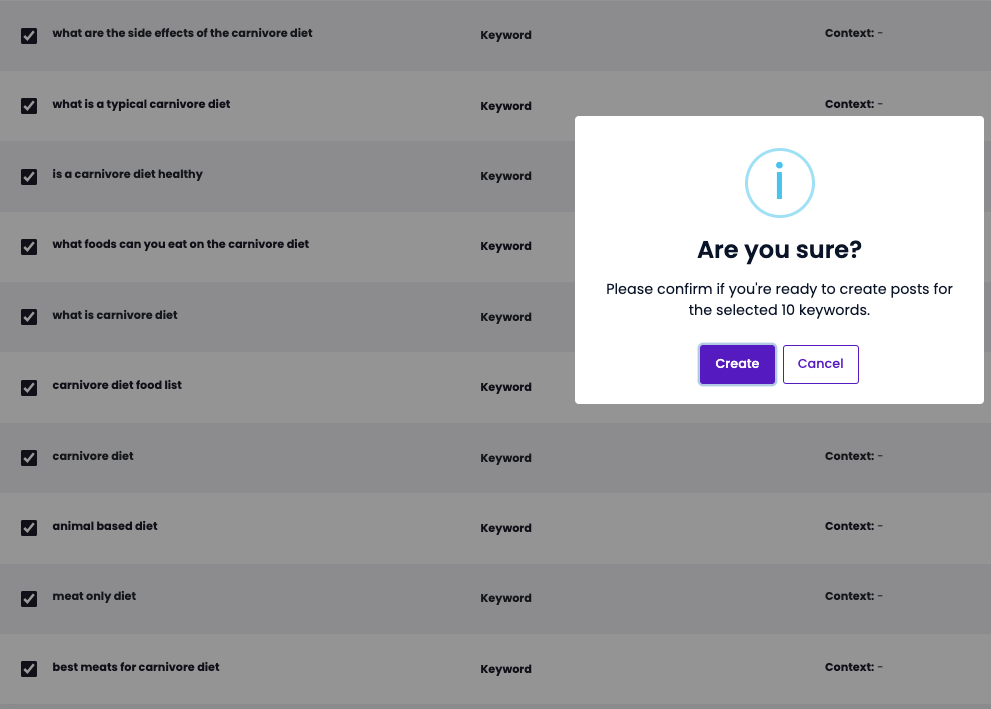
And just like that, BrandWell’s long-form content writer, RankWell, is out there writing 10 pieces of content at the same time.
FAQs – How to Find Hidden Niches
How do I find untapped niches?
Dig into forums, social media chatter, and customer reviews. Spot the gaps where user frustrations bubble up.
How do I find a unique niche?
Look for hobbies or problems you’re passionate about that others might overlook. That’s your gold mine.
How do I figure out my niche?
Analyze what you love and know well; match it to market needs. Where they intersect, there lies your niche.
How do you identify low-competition niches?
Leverage keyword tools to discover search terms with high interest but few quality resources or competing sites.
Conclusion
So, there you have it: a two-step simplified guide on how to find hidden niches and start a profitable business.
You now know that hidden niches are specialized, underserved, growing, and lasting – ripe for your taking.
You’ve learned how to spot them by tuning into consumer pain points. Those frustrations? They’re gold mines waiting for a savvy prospector like you.
And your resources? No need to pay hundreds of dollars for a bloated toolkit or army of human writers. All you need to discover and dominate hidden niches are Google Keyword Trends and BrandWell.
Once you have chosen a niche site with massive potential, brand it, research it, create content around it, and then publish at scale. That’s how to find hidden niches — and make them yours.

UNLOCK YOUR POTENTIAL
Long Headline that highlights Value Proposition of Lead Magnet
Grab a front row seat to our video masterclasses, interviews, case studies, tutorials, and guides.



